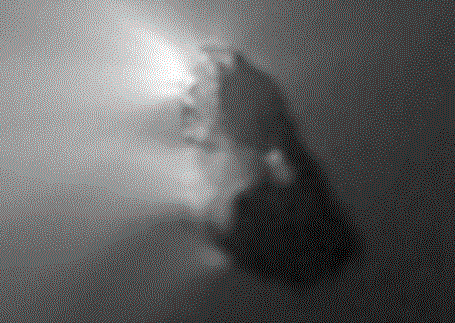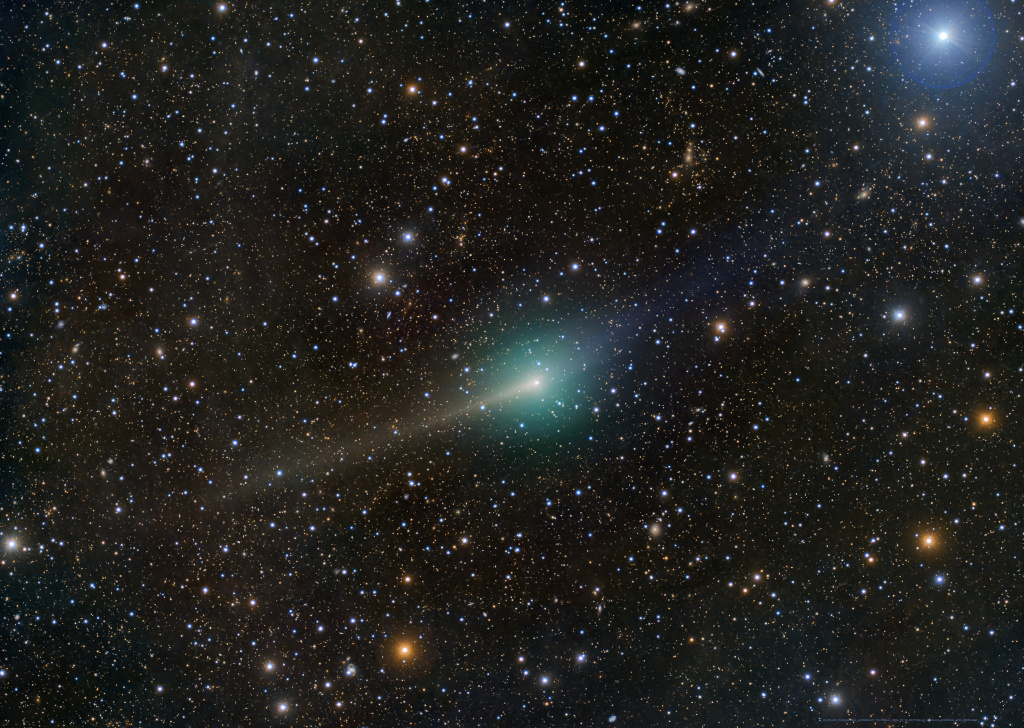
Credit: Halley Multicolour Camera Team, Giotto, ESA
Explanation: Here is what a comet nucleus really looks like. For all active comets except Halley, it was only possible to see the surrounding opaque gas cloud called the coma. During Comet Halley's most recent pass through the innerSolar System in 1986, however, spacecraft Giotto was able to go right up to the comet and photograph its nucleus. The above image is a composite of hundreds of these photographs. Although the most famous comet, Halley achieved in 1986 only 1/10th the brightness that Comet Hyakutake did last year, and a similar comparison is likely with next year's pass of Comet Hale-Bopp. Every 76 years Comet Halley comes around again, and each time the nucleus sheds about 6 meters of ice and rock into space. This debris composes Halley's tails and leaves an orbiting trail that, when falling to Earth, are called the Orionids Meteor Shower.
